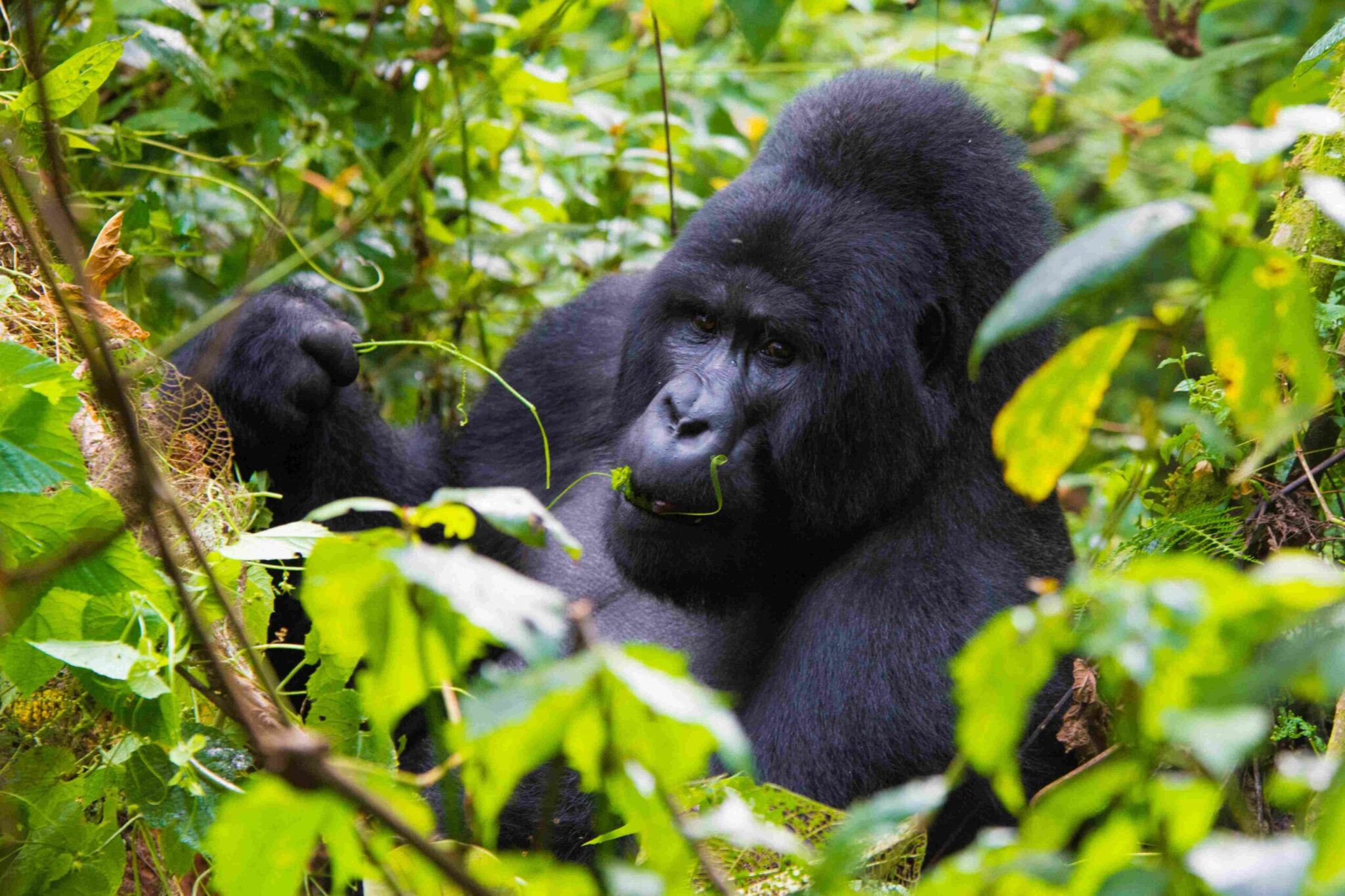Bwindi Impenetrable Forest National Park is a UNESCO World Heritage Site located in southwestern Uganda, at the junction of the plain and mountain forests. It covers 331 km2 of both montane and lowland forest, and is only accessible on foot. It is one of the most biodiverse forests in Africa, with more than 160 species of trees, over 100 species of ferns, 350 species of birds, 310 species of butterflies, 27 species of frogs, and many mammals, including the endangered mountain gorillas.
It is also home to many endemic species that are only found in the Albertine Rift region. The park is famous for hosting almost half of the world’s population of mountain gorillas, about 340 individuals, which live in 14 habituated groups that are open to tourism. These gentle giants are the main attraction of the park, and visitors can trek through the forest to observe them in their natural habitat. The park also has other primates, such as chimpanzees, colobus monkeys, baboons, and l’Hoest’s monkeys.
The forest is also rich in mammals, such as elephants, buffaloes, antelopes, giant forest hogs, civets, genets, and porcupines. The park has a high diversity of birds, with over 347 species recorded, including 23 Albertine Rift endemics. Some of the notable birds are the African green broadbill, the Grauer’s swamp warbler, the Chapin’s flycatcher, and the Shelley’s crimsonwing.
Things to do in Bwindi Impenetrable Forest National Park
The park offers a variety of activities for visitors to enjoy the beauty and diversity of the forest.
Gorilla Trekking
The most popular activity is gorilla trekking, which involves hiking through the forest with a guide and a ranger to find one of the habituated gorilla groups. The trek can take from 2 to 8 hours depending on the location of the gorillas, and visitors are allowed to spend one hour with them once they are found. The park has four gorilla trekking sectors: Buhoma, Ruhija, Rushaga, and Nkuringo. Each sector has different gorilla families and different levels of difficulty. Visitors need to book their permits in advance and follow the rules and regulations for gorilla trekking.
Other Activities
Other activities in the park include birdwatching, nature walks, cultural encounters, and community visits. Birdwatchers can enjoy spotting some of the rare and endemic birds in the forest trails or in the nearby swamps and wetlands. Nature walks can be done in different trails that showcase the different habitats and features of the forest, such as waterfalls, rivers, caves, and viewpoints. Cultural encounters can be arranged with the local communities that live around the park, such as the Batwa pygmies who were the original inhabitants of the forest. Community visits can involve learning about their history, culture, traditions, and livelihoods.
Frequently Asked Questions
Some of the common questions that visitors may have about visiting Bwindi Impenetrable Forest National Park are:
When is the best time to visit?
The park can be visited all year round, but the best time is during the dry seasons from June to August and December to February. The dry seasons have less rain and mud, which makes trekking easier and more comfortable. However, the park can also be visited during the wet seasons from March to May and September to November. The wet seasons have more rain and mud, which makes trekking more challenging but also more rewarding. The wet seasons also have more vegetation and food for the gorillas and other wildlife.
Where to stay?
The park has a range of accommodation options for different budgets and preferences. Where you stay is highed determined by which gorilla sector you will be visiting, booking a lodge close to the gorilla sector you will be trekking is ideal. There are lodges, campsites, guesthouses, and homestays near or within each sector of the park. Some of the lodges offer luxury services and amenities, such as hot showers, Wi-Fi, fireplaces, and balconies with stunning views of the forest. Some of the campsites offer basic facilities such as tents, mattresses, toilets, and showers. Some of the guesthouses and homestays offer affordable and authentic experiences with local hosts.
How to get there?
The park can be accessed by road or by air from different parts of Uganda or neighboring countries.
- By road, it takes about 8 to 10 hours from Kampala or Entebbe to reach any of the sectors of the park. There are public buses or private vehicles that can be hired for this journey.
- By air, it takes about 1 to 2 hours from Entebbe or Kigali to reach the nearest airstrips of Kihihi or Kisoro, which are about 1 to 2 hours drive from the park. There are scheduled or charter flights that can be booked for this option.

